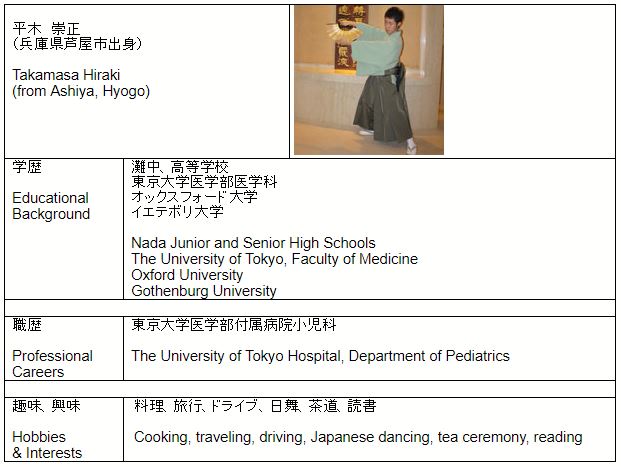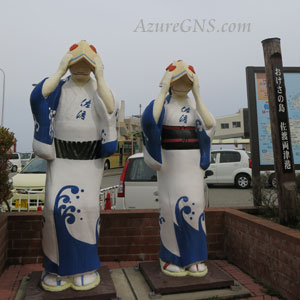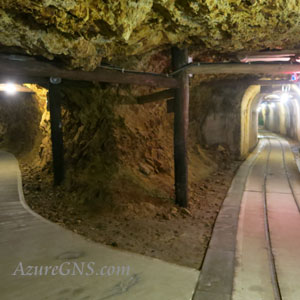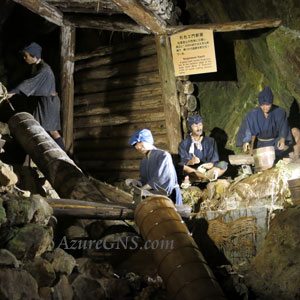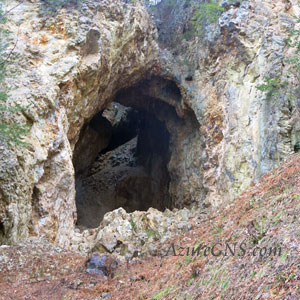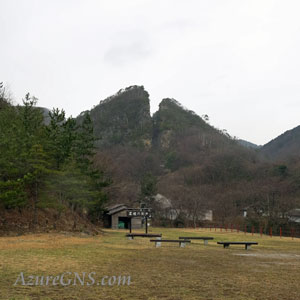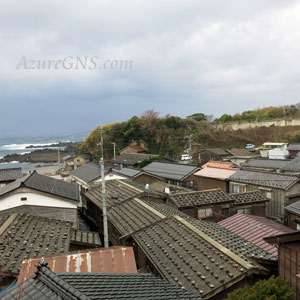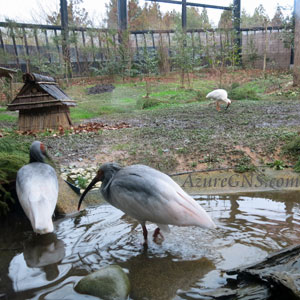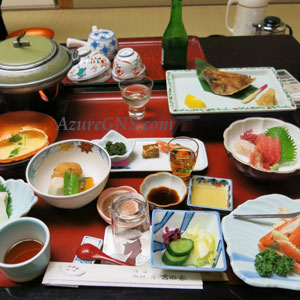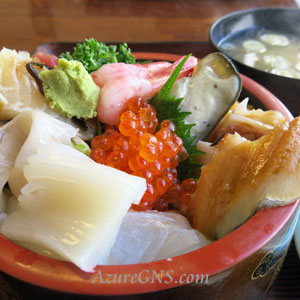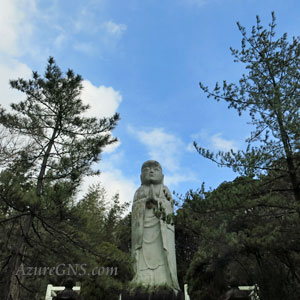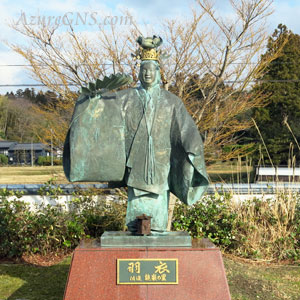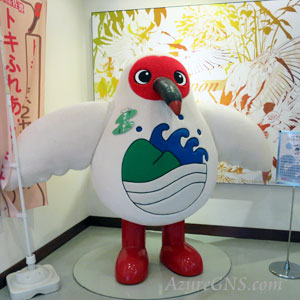佐渡訪問記
2016年2、3月の2ヶ月間、新潟県の山間部の病院で仕事をしていました。その仕事の合間を縫って、2月下旬に同僚と一緒に1泊2日で佐渡島に行ってきました。今回の旅行の最大の目的はかの有名な佐渡金山です。
For 2 months, in January and March of 2016, I worked at a hospital surrounded by mountains in Niigata Prefecture (the northern part of Japan). My coworker and I went on a 1-night, 2-day trip to Sado Island in our spare time. The main purpose for the trip was to visit the famous Sado Gold Mine.
現在佐渡金山は日本の世界遺産暫定リストに登録されており、佐渡島で最も有名な観光名所のひとつです。佐渡で金が産出されることは11世紀頃から知られていたようですが、実際に鉱山として金を大量に産出し始めたのは、17世紀初頭に江戸幕府が管理するようになってからのことです。江戸時代は一時年間400kgもの金の産出量を誇り、明治維新以降も民間企業に払い下げられて採掘を続けていましたが、鉱量枯渇のため1989年に採掘終了となりました。現在全長400km以上に及ぶ坑道のうち300m程度を観光用に公開しています。
The Sado Gold Mine has been on Japan’s Tentative List of World Heritage Sites and it is one of the most famous sightseeing sites on Sado Island. The reserves of gold in Sado were said to be already known around the 11th century, yet the production of a large amount gold at this gold mine was begun by the leadership of the Edo shogunate (1603-1867) at the beginning of the 17th century. As much as 400 kg of gold was produced a year during the Edo period, and in the Meiji period, the gold mine was sold off to a private company and was mined until 1989 when it was closed because of a depletion of reserves. 300 m of mining tunnel out of a total of more than 400 km is open for sightseeing.
坑道は2コースあり、江戸時代に手掘りで造られた宗太夫坑(そうだゆうこう)は当時の趣を残しており、江戸時代の採掘を再現したカラクリ人形が展示されています。新潟県民の多くが佐渡金山を修学旅行で訪れており、佐渡と言えばこれらの人形を思い出す方も多いようです。一方、1899年(明治32年)に開削され、平成元年まで使われていた道遊坑(どうゆうこう)では、近代化された設備を見ることが出来ます。
There are 2 courses of the mining tunnel, Sodayuu-ko(宗太夫坑)and Doyu-ko (道遊坑). Sodayuu-ko was a hand-dug tunnel in the Edo period, and it still has the profound atmosphere of those days. The digging site was reproduced with replica mechanical miners. As many students in Niigata Prefecture visit the Sado Gold Mine on school excursions, when speaking of Sado, they remember these miners. On the other hand, digging at Doyu-ko was begun in 1899 (Meiji 32nd yr) and was mined for gold until 1989 (Heisei 1st yr). Modernized equipment is now exhibited there.
また坑道を見学した後は、「道遊の割戸」(どうゆうのわりと)と呼ばれる、江戸時代初期に露頭掘(ろとうぼり)を行っていた採掘跡を間近で見ることが出来ます。遠目から見ると山をスパッと割ったかのように割れ目が入っており、その一部は道遊坑と繋がっています。この繋がっている孔は道遊坑の中からも確認することが出来ます。2017年春には真っ暗な坑道をライト片手に探検する無名異坑(むみょういこう)コースも開始されるそうです。洞窟探検という子供の頃の夢を具現化したような体験コースで、きっと採掘当時の雰囲気を更に存分に味わえることでしょう。
After looking around the mining tunnels, we saw ‘Doyu-no-warito’ close up, which was the digging site of Roto-bori at the beginning of the Edo period. Seen from a distance, ‘Doyu-no-warito’ has a big crevice as if it was cut sharply in two, and some parts are connected to Doyu-ko. These connecting holes can also be seen from Doyu-ko. In the spring of 2017, the Mumyo-iko course was newly opened, which is an expedition through a dark mining tunnel only with a light in hand. This is an experience course in which people can realize their childhood dreams of cave exploration and allow explorers to experience a more efficiently real mining atmosphere at that time.
更に佐渡金山の近くには、金山で採れた鉱石から金を精製する施設のあった北沢地区があります。採掘終了の後は使用されておらず、現在は軍艦島を彷彿とさせるような迫力ある廃墟となっております。
Moreover, near the Sado Gold Mine, there is the Kitazawa area where the facilities for refining gold from ore are located. Those facilities are now abandoned and this area is now striking ruins that remind us of Gunkan-jima (Battleship Island in Nagasaki Prefecture).
今回の旅行ではこれらの金山に関する施設の他には、日本を代表するような国民的女優のCMのロケ地となり一躍有名となった宿根木集落や、トキの飼育や繁殖を行っているトキの森公園などを訪れました。トキは日本の特別天然記念物に登録されており、国際保護鳥でもあります。目と鼻の先でトキを見られるなんて、とても貴重な体験が出来て感激しました。
During this trip, besides the gold mining areas, we visited Shukunegi Village which became famous through a commercial film of one of Japan’s best-known actresses. We also visited Toki Forest Park where Toki (crested ibises) are raised and bred. Toki was registered as a special Japanese natural treasure and is an internationally protected bird. We saw Toki close up and were deeply moved by the valuable experience.
また佐渡は食事も大変美味しく、旬のヤリイカをはじめとした新鮮な海の幸を堪能しました。他にも、日本酒や佐渡和牛など美味しい名産品が目白押しでした。また佐渡島は数多くの温泉地としても有名です。今回は両津港にほど近い温泉宿に宿泊し、加茂湖を眺めながら露天温泉につかり日頃の疲れを癒しました。
We fully enjoyed wonderful fresh seafood in Sado, especially Yari-ika (a spear squid) in the best season. There were also other local specialties such as Sake (Japanese rice wine) and Sado-wagyu (Japanese beef produced in Sado). Sado Island is also famous for many hot springs. This time, we stayed at an inn with a hot spring near Ryotsu Port and took an open-air bath looking at Kamo Lake and slowly unwound from our weariness.
上記のように素晴らしい観光名所がある一方で佐渡は古くから流刑の地としても知られており、順徳上皇や日蓮上人、世阿弥など様々な貴族や文化人が配流されました。現在でも真野御陵(まののみささぎ)や根本寺(こんぽんじ)など彼らと縁の深い史跡が残っています。これらの流人によって京都からもたらされた文化が独自の発展を遂げ、能や佐渡おけさなど様々な伝統芸能が未だなお地域に深く根付いています。
As described earlier, Sado has many wonderful tourist spots to visit; on the other hand, this remote island had long been a famous place of banishment. Various noblemen and people of culture were deported to this island such as Retired Emperor Juntoku, High Priest Nichiren and Zeami (a Noh player and writer). Some historic sites in connection with those exiles still exist: Mano-no-misasagi is the cremation mound of Retired Emperor Juntoku, and Kompon Temple is deeply associated with the Priest Nichiren. The culture which those exiles introduced from Kyoto into Sado has uniquely developed. Various traditional performances including Noh and Sado-okesa (a folk song originated in Sado) are still deeply rooted in the region.
今回は冬季であり、残念ながら伝統芸能に触れる機会には恵まれませんでした。また弾崎灯台(はじきざきとうだい)や大野亀なども一目見たかったのですが、時間の都合上残念ながら今回は断念しました。この他にも機会に恵まれずやり残したことがたくさんあります。是非また近いうちに再訪させていただきたいと思います。
We visited Sado in the winter, so unfortunately, we had no chance to appreciate a traditional performance. We didn’t have enough time to see Hajiki-zaki Lighthouse and Oonogame (a 167m rock sticking out from the sea) though we had really wanted to see them. There are many other things left for us to do. We would like to visit Sado again in the near future.
